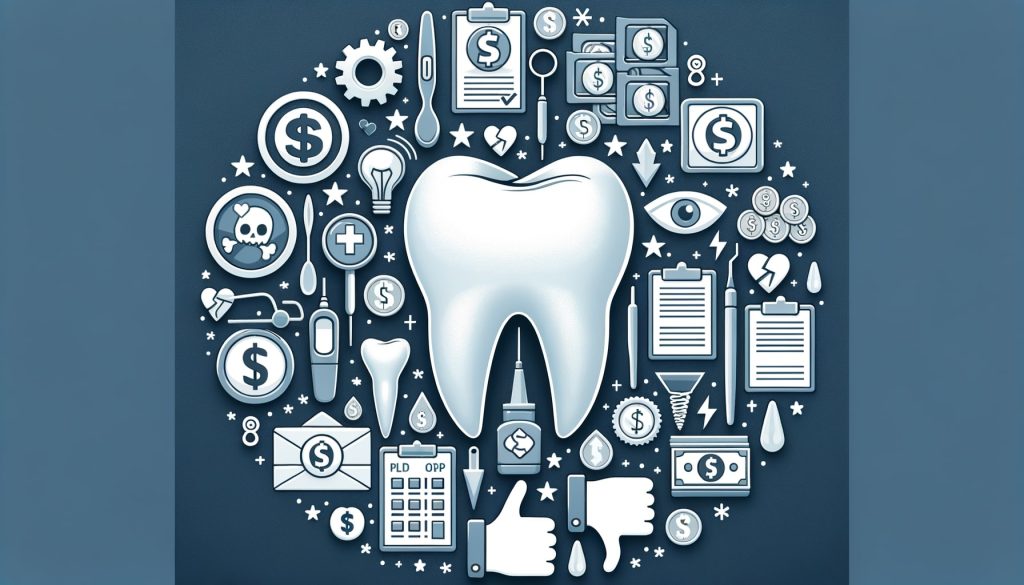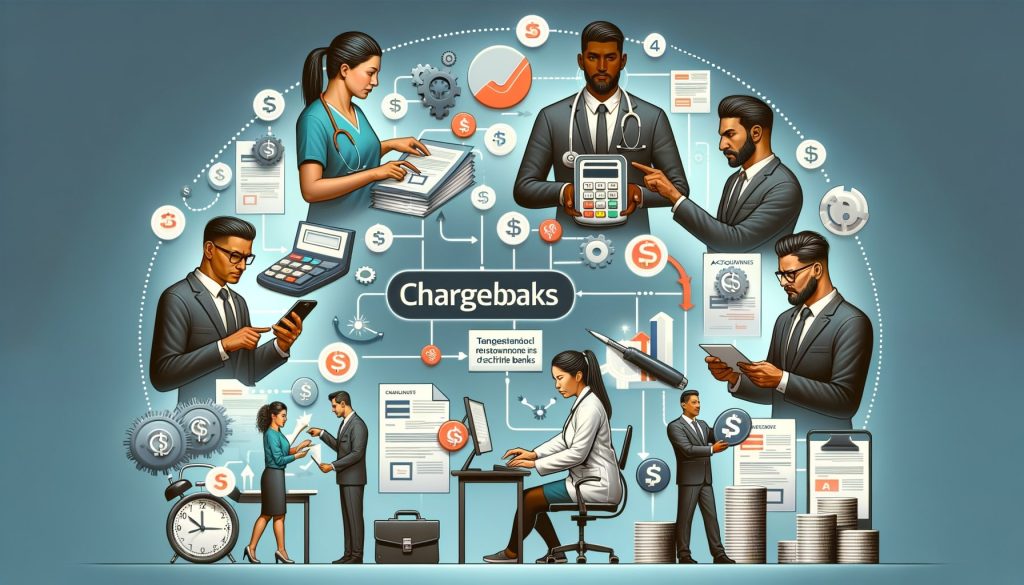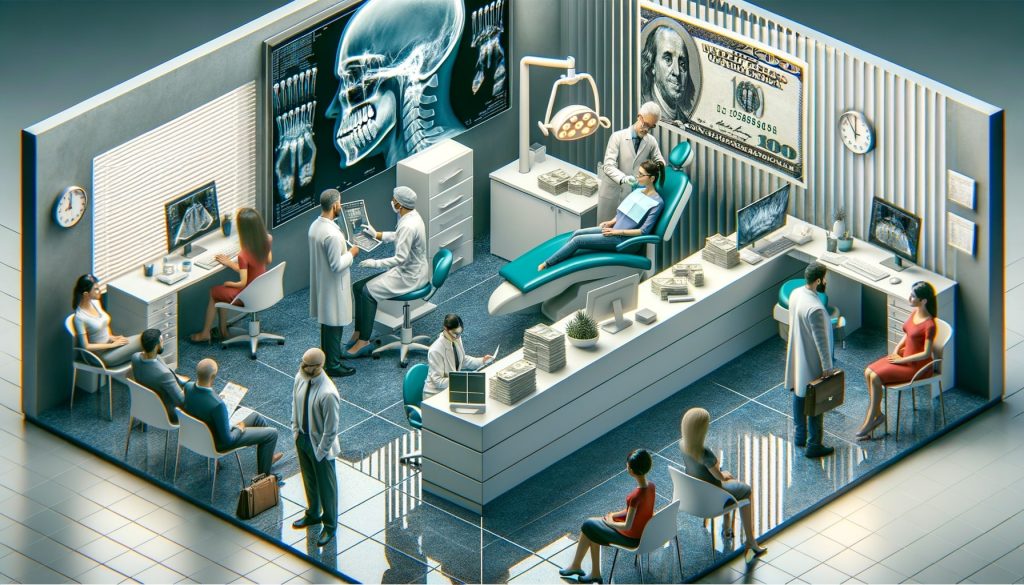In the dental industry, managing payments efficiently is critical for maintaining a healthy cash flow and ensuring smooth operations. One of the financial challenges that dental practices may encounter is dealing with chargebacks. Chargebacks occur when a patient disputes a payment made to the dental office, leading to the reversal of the transaction. Understanding what chargebacks are, why they happen, and how to handle them is essential for every dental practice.
This guide will explore chargebacks in the context of dental practices, what causes them, how they impact your practice, and strategies for preventing and managing them. By the end of this article, you will be equipped with the knowledge to effectively handle chargebacks and minimize their impact on your dental office.
Table of Contents
ToggleWhat Are Chargebacks?
A chargeback is a payment reversal initiated by a patient or customer through their bank or credit card provider. In essence, it allows a patient to dispute a charge on their credit or debit card after the transaction has been completed. The credit card issuer temporarily or permanently returns the funds to the patient, and the dental practice may be left without payment for the services rendered.
Chargebacks were initially designed to protect consumers from fraud and unauthorized transactions. However, they can also result from misunderstandings, dissatisfaction with the service, or even intentional abuse of the system by patients.
The Chargeback Process
The chargeback process begins when a patient contacts their credit card provider to dispute a charge. Once the dispute is initiated, the bank notifies the dental practice’s payment processor, and the funds are withdrawn from the practice’s account. The practice is then given an opportunity to provide evidence or documentation to refute the chargeback.
Here’s a breakdown of the typical chargeback process:
- Dispute Initiation: The patient contacts their credit card provider to file a dispute over a transaction.
- Investigation: The credit card provider reviews the claim and may ask the dental office to provide documentation to support the charge.
- Chargeback Decision: The provider decides whether to uphold the dispute or side with the dental practice.
- Fund Reversal: If the chargeback is upheld, the funds are permanently returned to the patient, and the dental office may be charged additional fees. If the dental office wins the dispute, the funds remain with the practice.
Common Causes of Chargebacks in Dental Practices

Dental practices are not immune to chargebacks, and there are several common reasons patients might initiate a dispute. Understanding these causes can help practices prevent chargebacks from occurring.
1. Dissatisfaction with Services
One of the most common reasons for chargebacks in the dental industry is patient dissatisfaction with the service provided. This could be related to the quality of care, unexpected costs, or the outcome of a treatment. For example, if a patient is unhappy with the results of a cosmetic dental procedure or believes they were overcharged, they may dispute the payment.
2. Miscommunication About Costs
In some cases, patients may not fully understand the costs associated with their dental treatment, leading to disputes. For example, if a patient believes that their insurance will cover the entire cost of a procedure but later finds out they owe a balance, they might initiate a chargeback to contest the amount charged.
Clear communication with patients about their financial responsibilities before performing any procedures is critical for avoiding this issue.
3. Insurance Denials or Misunderstandings
Dental offices often deal with insurance companies to process payments on behalf of patients. However, when insurance claims are denied or partially covered, patients may be surprised by the remaining balance and dispute the charge. This is especially common when patients believe their insurance should have covered more of the cost.
4. Fraudulent Activity
In some cases, a chargeback may be initiated due to fraudulent activity, such as identity theft or unauthorized card use. This type of chargeback is out of the control of the dental practice but still impacts its bottom line. Implementing security measures, such as requiring identification for card-present transactions, can help reduce fraud-related chargebacks.
5. Patient Forgetfulness or Confusion
Sometimes patients simply forget about a dental visit or are confused by the name of the dental practice on their credit card statement. If the charge appears unfamiliar, they may assume it is fraudulent and request a chargeback. To avoid this, ensure that your practice’s name is clearly recognizable on statements, and follow up with patients after treatments to remind them of upcoming payments.
The Impact of Chargebacks on Dental Practices

While chargebacks are a mechanism designed to protect consumers, they can have several negative consequences for dental practices. These consequences extend beyond the financial loss from the disputed transaction.
1. Financial Losses
The most immediate impact of a chargeback is the financial loss to the practice. Not only is the original transaction amount refunded to the patient, but the dental office may also incur additional fees from the payment processor. Chargeback fees can range from $20 to $100 per instance, depending on the payment processor’s policies.
2. Damaged Reputation with Payment Processors
A high chargeback rate can damage the relationship between a dental practice and its payment processor. If your practice experiences frequent chargebacks, your payment processor may classify you as a high-risk merchant. This can result in higher processing fees, stricter terms, or even the termination of your merchant account.
3. Time and Administrative Burden
Handling chargebacks can be time-consuming, requiring your staff to gather documentation, respond to disputes, and follow up with payment processors. This administrative burden can take away valuable time that could be spent on patient care and other essential tasks.
4. Negative Patient Relationships
Chargebacks can also strain relationships with patients, especially if the dispute arises from miscommunication or dissatisfaction with services. Patients who file chargebacks may be less likely to return to your practice, and they may share negative reviews or feedback that could harm your reputation.
How to Prevent Chargebacks in Your Dental Practice

Preventing chargebacks is essential for maintaining the financial health of your dental practice. While not all chargebacks can be avoided, there are several strategies you can implement to reduce their occurrence.
1. Provide Clear and Detailed Estimates
One of the most effective ways to prevent chargebacks is by providing clear and detailed estimates to patients before performing any procedures. Ensure that patients understand the costs of the treatment, what their insurance will cover, and what their out-of-pocket expenses will be. This can help avoid misunderstandings and disputes over payment.
Use written estimates or treatment plans and have patients sign off on the estimated costs. This documentation can serve as evidence in the event of a chargeback dispute.
2. Improve Communication About Insurance Coverage
Since misunderstandings about insurance coverage are a common cause of chargebacks, make sure your dental office communicates clearly with patients about what their insurance covers and any out-of-pocket costs they may incur. Provide a detailed explanation of how the insurance claim process works and follow up with patients if their insurance denies or reduces a claim.
3. Implement Strong Payment Security Measures
Fraud-related chargebacks can be minimized by implementing robust payment security measures. Consider the following steps to protect your practice from fraud:
- Use EMV Chip Card Readers: Ensure that your payment terminals support EMV chip card technology, which helps reduce the risk of fraudulent transactions.
- Require Identification: For card-present transactions, ask for identification to verify the cardholder’s identity.
- Use Address Verification Services (AVS): AVS helps verify the billing address provided by the patient during card-not-present transactions, reducing the likelihood of fraud.
4. Keep Accurate and Detailed Records
Maintaining accurate and detailed records of every transaction is essential for protecting your practice in the event of a chargeback dispute. Keep copies of signed consent forms, treatment plans, payment receipts, and insurance claims. If a chargeback occurs, this documentation will be crucial in proving that the transaction was legitimate and authorized.
5. Regularly Follow Up with Patients
Stay in regular communication with your patients before, during, and after their treatments. Follow up with reminders about upcoming payments or balances owed, and provide them with detailed receipts for all services rendered. This helps to ensure that patients are aware of their financial obligations and reduces the likelihood of a chargeback due to forgetfulness or confusion.
6. Maintain a Positive Patient Experience
A positive patient experience can go a long way in preventing chargebacks. Ensure that your staff is courteous, professional, and responsive to patient concerns. If a patient is dissatisfied with their treatment or the payment process, try to resolve the issue directly before it escalates to a chargeback.
How to Handle Chargebacks in Your Dental Practice

Despite your best efforts, chargebacks may still occur. When they do, it’s important to handle them effectively to minimize financial losses and protect your practice’s reputation.
1. Respond Promptly
When you receive a chargeback notification from your payment processor, respond as quickly as possible. Delaying your response may result in the funds being permanently returned to the patient, even if you have evidence to refute the chargeback.
2. Gather Documentation
To dispute a chargeback, you will need to provide documentation that proves the transaction was legitimate. This may include:
- Signed treatment plans or consent forms
- Payment receipts
- Proof of services rendered
- Insurance claim information
- Written communication with the patient
The more evidence you can provide, the stronger your case will be.
3. Work with Your Payment Processor
Your payment processor will guide you through the chargeback dispute process. Follow their instructions carefully and provide all requested documentation within the specified time frame. Your processor may also offer advice on how to strengthen your case or prevent future chargebacks.
4. Communicate with the Patient
In some cases, resolving the chargeback directly with the patient may be the best course of action. Reach out to the patient to discuss their
concerns and see if the issue can be resolved amicably. Sometimes, misunderstandings or dissatisfaction can be addressed through open communication, avoiding the need for a formal chargeback dispute. If the patient agrees to withdraw the chargeback, make sure they contact their card issuer to cancel the dispute.
5. Accept the Outcome
Not every chargeback dispute will be resolved in favor of your dental practice. If the credit card provider rules in favor of the patient, the funds will be permanently returned to them. While this can be frustrating, it’s important to accept the outcome and learn from the situation to prevent future chargebacks. Consider reviewing your processes and communication strategies to identify areas for improvement.
FAQs About Chargebacks in Dental Practices
Q1: How long does the chargeback process take?
The chargeback process can take anywhere from a few weeks to several months, depending on the complexity of the dispute and the credit card issuer’s policies. It’s important to respond promptly and provide all necessary documentation to expedite the process.
Q2: Can I dispute a chargeback if the patient agreed to the treatment plan?
Yes, if you have clear documentation that the patient agreed to the treatment plan, including signed consent forms and detailed payment information, you can dispute the chargeback. This documentation is critical to your case.
Q3: What are chargeback fees, and how much can they cost my practice?
Chargeback fees are additional fees charged by your payment processor when a chargeback occurs. These fees can range from $20 to $100 per chargeback, depending on your payment processor’s terms. Repeated chargebacks can also lead to higher processing fees or stricter terms from your payment provider.
Q4: Can I prevent all chargebacks?
While it’s impossible to prevent every chargeback, you can significantly reduce the risk by improving communication with patients, providing clear estimates, securing transactions, and maintaining accurate records. However, some chargebacks, such as those related to fraud, may still occur.
Q5: How can I reduce the likelihood of chargebacks related to insurance misunderstandings?
To minimize chargebacks related to insurance, clearly communicate with patients about their financial responsibilities before treatment begins. Provide written estimates of what insurance will cover and what the patient will need to pay out of pocket. Follow up with the patient if insurance claims are denied or partially covered.
Conclusion
Chargebacks are an unfortunate reality for many dental practices, but understanding how they work and taking proactive steps to prevent them can protect your practice from financial loss and reputational damage. By providing clear communication with patients, maintaining detailed records, implementing strong payment security measures, and responding promptly to disputes, your dental office can reduce the likelihood of chargebacks and handle them effectively when they do arise.
While chargebacks may occasionally occur despite your best efforts, the key to minimizing their impact is to be prepared. Train your staff, review your processes regularly, and ensure that you are complying with industry best practices for payment processing and patient communication. By doing so, you can protect your dental practice and maintain a positive relationship with both patients and payment processors.
Taking the time to understand chargebacks and how to manage them will not only safeguard your financial stability but also foster a better experience for your patients. This proactive approach will keep your dental office running smoothly and help build long-term success.
